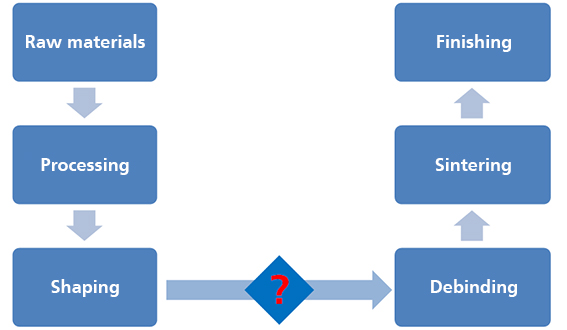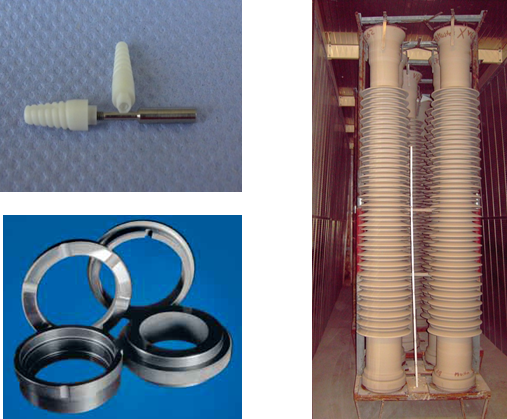Completed funded project
Motivation
The production chain for technical ceramics comprises many individual steps that require different amounts of energy. Approx. 50% of the energy is used for heat treatment alone. Powder preparation and finishing are also energy-intensive. Energy savings in individual manufacturing steps often result in increased energy consumption in the following steps. For example, savings in powder preparation result in coarser grain sizes which require higher sintering temperatures. Shorter and more energy-efficient firing programs lead to shape deviations and higher reject rates, which increases the energy required for finishing and reduces material efficiency.
Objective
The ENITEC project aimed to demonstrate that energy efficiency in the production of technical ceramics could be improved by about 40%. The entire production chain should be considered. The measures should be economically feasible. The solutions should be applicable to technical ceramics of different composition and geometry.
Results
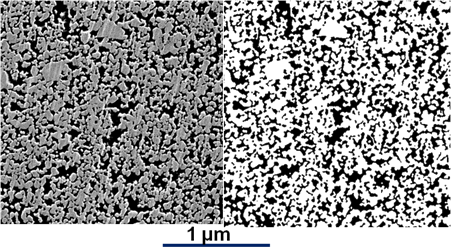
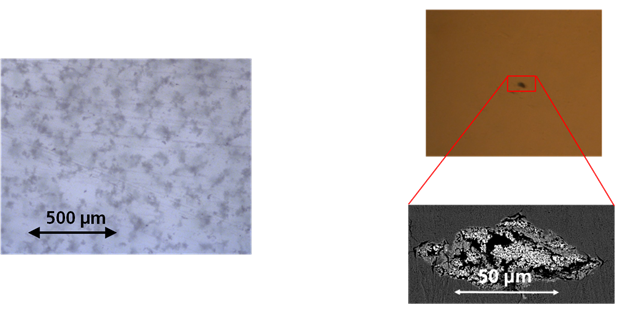
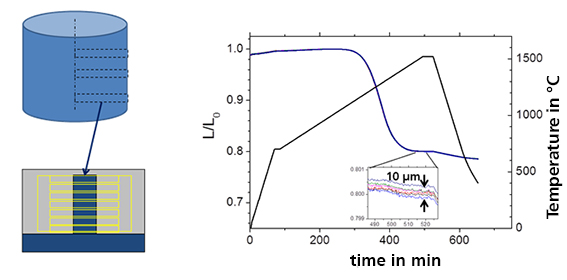
At the HTL, a method was developed to measure the quality of green parts with high accuracy on different size scales:
- Micro scale: Ion beam etching → SEM → Variance analysis
- Meso scale: Infiltration → Light microscopy → Target preparation
- Macro scale: Extraction of drill cores → Sintering → Distortion measurement with TOM
Thus, the complexity of the optimisation task was reduced considerably. In addition, procedures were developed with which debinding and sintering can be simulated and analysed on a laboratory scale. For this purpose, software was developed which - based on the measured data - allows a precise prediction of the kinetics. In this way, the energy consumption during heat treatment can be minimised.
A detailed final report on the ENITEC project has been published by VDMA-Verlag and is available from the Fraunhofer Centre HTL:
PD Dr. Friedrich Raether (ed.): Energieeffizienz bei der Keramikherstellung, final report ENITEC, ISBN 978-3-8163-0644-3, VDMA-Verlag (2013).
Project Data
| Project Duration | 01.07.2009 - 31.12.2012 |
| Sponsor | Federal Ministry of Education and Research, funding programme "Energy efficiency in production" |
| Funding Amount | 500,000 Euro |
| Project Partners | Fraunhofer-Centre HTL BCE Special Ceramics GmbH Eisenmann Anlagenbau GmbH & Co. KG FCT Systeme GmbH Lapp Insulators GmbH Fraunhofer-Institute for Material Mechanics IWM CeramTec GmbH |
| Project Coordination | CeramTec GmbH |
| Project Management and the HTL | Prof. Dr. Friedrich Raether |

 Fraunhofer ISC, Center for High Temperature Materials and Design HTL, Bayreuth
Fraunhofer ISC, Center for High Temperature Materials and Design HTL, Bayreuth